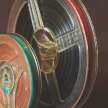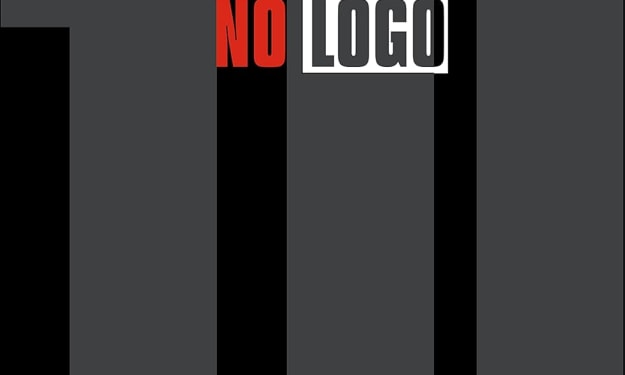Shot of the Movie: The Poseidon Adventure (1972) and Poseidon (2006)
Double Feature!

This article is one of a series - Shot of the Movie - and may contain spoilers.
Today, I'm going to be presenting a double feature on The Poseidon Adventure (1972), and it's reimagining, Poseidon (2006). Before we jump in, I want to give a quick shout-out to whoever was responsible for this:

To the person responsible for the decision to glue a leek to the hot food counter, in Poseidon (2006), you are my hero. For those of you questioning my sanity, it's a very "pun(ny)" situation. In this scene, the Poseidon (a cruise liner) has just been hit by a rogue wave (more on this later). Following the wave's impact, we get a quick succession of the damage in various parts of the ship, when suddenly, we cut to the kitchen, where we get this blink and you'll miss it joke. . . There's a leak (leek) on the boat. *Cackles* Brilliant foreshadowing.
Alright, all jokes aside, let's get into it.
"We're cut off from the rest of the world. They can't get to us. Maybe we can get to them." - Rev. Scott
Film Overview
The quote above is offered by Rev. Scott, the de facto leader of the survivors in the 1972 film, but it's really very fitting for both movies. Both films center around a dwindling group of passengers who are forced into an out-of-their-element survival story when their cruise liner is struck by an impossibly large wave just after midnight on New Year's Eve. The impact of the wave flips the vessel upside down, forcing the team to make their way to the bottom (now top) of the ship, in an effort to get away from rising water, with their only hope being an unlikely rescue through the hull of the ship.
While the origins of the wave differ (1972 is an earthquake, while 2006 is simply a rogue wave, a truly terrifying real phenomenon), both disasters occur on New Year's Day, the teams of survivors in each film approximate one another, and their goals are ostensibly the same.
The Poseidon Adventure (1972) was written by Paul Gallico, Stirling Silliphant, and Wendell Mayes; directed by Ronald Neam; and stars Gene Hackman, Ernest Borgnine, and Shelley Winters.
Poseidon (2006) was written by Mark Protosevich (with credit to Paul Gallico); directed by Wolfgang Petersen; and stars Josh Lucas, Kurt Russell, and Emmy Rossum.
While a disaster film surrounding boats, including passenger liners, wasn't a new concept when the 1972 film rolled around (no pun intended), this was the first film* to raise the stakes in the "flooded-ship" subgenre of disaster films by giving the survivors almost no where to go. By turning the boat upside down, not only will the boat sink, but unless survivors can find a way out of a space designed to remain sealed, they will sink right along with it. After all, there is only a small amount of air in the boat, and the entire ocean to fill it.
Context Scene (1972)
The context scene for each film is slightly different, so we'll split the movies here. While each shot of the movie is near each other in terms of the movies' progressions, they are still far enough apart that I believe context is needed for each. Let's start with the original, The Poseidon Adventure (1972).
In this scene, the boat has just settled upside down and some passengers find themselves clinging to what is now the ceiling (dang it, gravity!)
I was tempted to use this scene because, visually, it's a lot of fun.

But, technically, people being upside down wasn't an entirely novel concept, even for 1972. Heck, amusement parks even had this type of attraction the 1960s (e.g. Cedar Point, Ohio's "the Fun House"). So while I give mad props to (literally) the props department and all the crew responsible for not only securing tables and chairs to the ceiling but also the actors willing to hang from that height, my choice for the Shot of the Movie comes right after this, when one of the passengers finally has to let go.
This is the Shot of the Movie.

The Shot of the Movie (1972)
You're probably familiar with this fall. It's truly iconic and was said to have made the career of Ernie Orsatti, the stuntman who performed it.
There are a few reasons why this shot is excellent:
- The shot changes without the camera moving. Filmed from the ceiling, we get a really fun high shot that becomes a wide shot without the camera doing a thing. Because gravity pulls our actor away, the camera and the audience get to be one in the same. We can't help this man, all we can do is watch him hit the "floor" while we're safely fixed to the "ceiling."
- The fall was done practically. This is not a doll. That is not a green screen. A stunt man fell from the ceiling and hit a structure built to look like a giant glass light. Various sources note this was his first stunt, and he was not injured in doing so. What we get from this terrifying shot is a realistic look at the gravity (pun intended) of the situation the characters are in. One misstep results in deadly consequences.
- It inspires other shots. Nobody sue me. I don't have any proof of what I am about to say, but does this scene not give us all Hans-Gruber-falling-off-Nakatomi-Tower vibes? There are obvious differences, notably, Hans was at the top of our screens holding on to the bottom, while this actor is at the bottom of the screen holding onto the top. The neat thing about the latter, is that it makes the viewer uneasy. We feel like he is upside down, which of course, the boat is right now. Think about it, how might this shot hit differently if they filmed it the way Die Hard (1988) was filmed? Again, no proof that Hans Gruber falling was an homage to this, but it is hard to deny that they have similar structures.
Let's Fast Forward 34 Years...
Context Scene (2006)
For 2006, the cast and crew had more of an up-hill battle in providing a contender for the Shot of the Movie. This is mostly due to the fact that we have another, very similar movie to compare it directly to. "Wow, look at all those amazing things they did in 1972! Look at all those practical effects. Look at all those stages. Wow, wow, wow."
2006, while being able to offer much stronger visual effects by way of computer models and rendering, weirdly isn't as exciting. The ideas are great, don't get me wrong. I love that they have a whole scene showing the effects of the rogue wave on the pool inside the ship, super clever! And of course you can look at my whole leek adoration at the start of this post to know how I feel about the conscious detailing that went into the disaster elements of this film.
But at the same time, we already know what a wave hitting a ship looks like. In an odd sense, the wave-impact scenes feel obligatory, but as a viewer you have a nagging, lingering thought, something along the lines of, "Okay destruction and gravity rampage, I get it, let's get to the escaping."
So, that all being said, how do we select a singular shot from a remake that (1) stands out against its predecessor, (2) changes our understanding of what can happen in such an event, and (3) is an interesting piece of film? For that, I had to choose something before the call-to-action, and that is a shot of the wave itself.
This is the Shot of the Movie.

The Shot of the Movie (2006)
In hearing that a rogue wave may be heading their way, the Captain picks up a pair of binoculars. He pans up from where the waterline should be, to where the wave actually is. Similar to our Shot of the Movie (1972), the camera holds steady. We only see the actors movements and the only noticeable change with these movements is the reflection of the wave in his binoculars.
Rather than the seeing the wave, itself, we see the wave in the reflection, and this makes for an even more terrifying scene, particularly because the only thing highlighting the wave is the moon, and the wave is so tall, it eclipses part of it.
I've often been a fan story of telling through reflective surfaces. I think back to the attempted suicide scene in The Great McGinty (1940) as a prime example, but this Shot of the Movie, works just as well. Reflective surfaces are great ways to frame important pieces of information, make them feel more critical, or convey a message, without showing the audience the message outright. It teases something, makes you think a little harder, and can prepare you for something later.
Wolfgang Peterson is going to show us this wave, in person, just a few cuts later. It's massive, it's terrifying (just ask Richard Dreyfuss's character), but it's ultimately not nearly as frightening as our first introduction to it. With this clever use of reflection, we get a sneak preview of what's to come, and it's a claustrophobic, breath-taking vision that reflects (last pun intended) the constraints of the adventure ahead. You add all of this to the fact that we get this sneak peak crammed inside the binoculars of the only guy on the ship, who might be able to help us and you have a winning combination. He's terrified, so we're terrified. This isn't a horror film, but job well done in framing a monster. Let the survival clock start now.
Well, have we gotten to the bottom of it? The Shot(s) of the Movie, that is. As for the boats, if you haven't seen these movies yet, you'll just have to watch to find out.
____________________
*to this author's knowledge
About the Creator
Bethany Yoder
Fascinated with the art and science of story-telling, particularly through the lens of film and the magic of subtext.






Comments
There are no comments for this story
Be the first to respond and start the conversation.